
10.28.2025
Synagogues are at the heart of Jewish life, serving as spaces for prayer, learning, and gathering. Every design choice influences how the community experiences sacred time and space. As an interior design firm for synagogues, HH Designers approaches each project with respect for tradition and a commitment to modern excellence.
These synagogue and shul projects represent a diverse range of communities, locations, and architectural styles. Each reflects a shared mission: to elevate spiritual experience through design that is warm, functional, and deeply human.
.jpg)
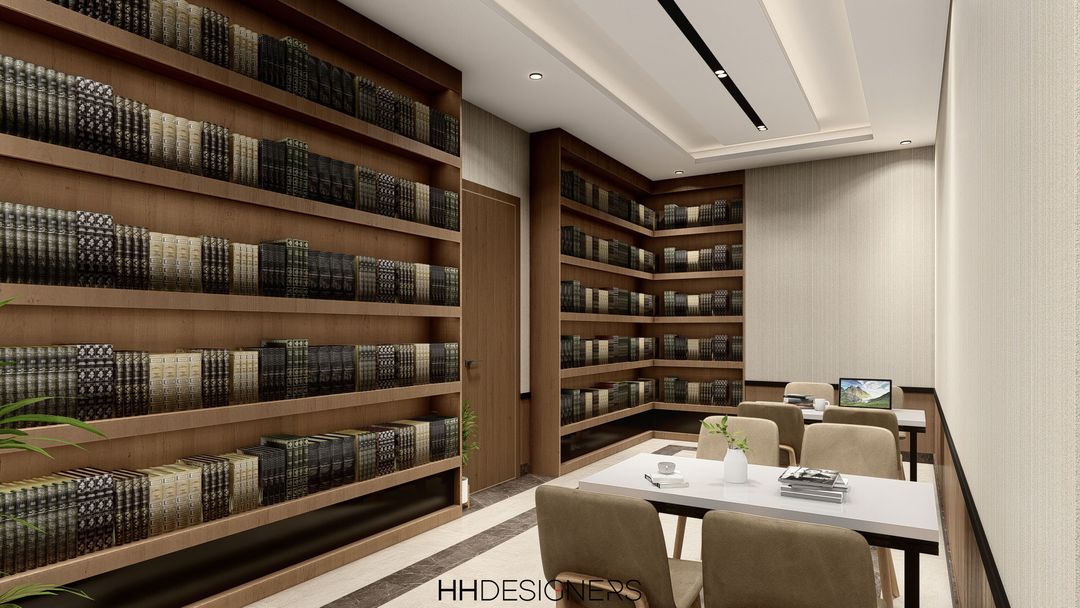
The Axstone Synagogue is a study in balance between minimalism and sanctity. Located in the Catskill region of New York, this 10,000-square-foot space invites worshippers into a setting that feels both modern and timeless.
Upon entering, visitors are greeted by a soft transition from daylight to the serene glow of the sanctuary. The walls are lined with pale Jerusalem stone, their texture subtly reflecting light and symbolizing purity. Warm wood tones in the seating and aron kodesh bring familiarity and comfort.
The sanctuary ceiling is designed to lift the gaze. Gentle curves and acoustic baffles create both a visual and auditory calm. Hidden lighting washes the ceiling in a soft golden hue, suggesting divine illumination without overpowering the architecture.
Adjacent to the sanctuary are multipurpose spaces that accommodate weekday minyanim, Torah study, and community celebrations. Glass partitions allow transparency while maintaining acoustical privacy, ensuring every activity feels connected yet distinct.
Outdoor views of trees and natural light further enhance the sense of peace. According to ArchDaily, natural light is one of the most powerful design elements in religious spaces, fostering emotional connection and spiritual grounding.
Design takeaway: Axstone demonstrates how architectural restraint and material harmony can create a deeply spiritual environment that serves both sacred and social functions.
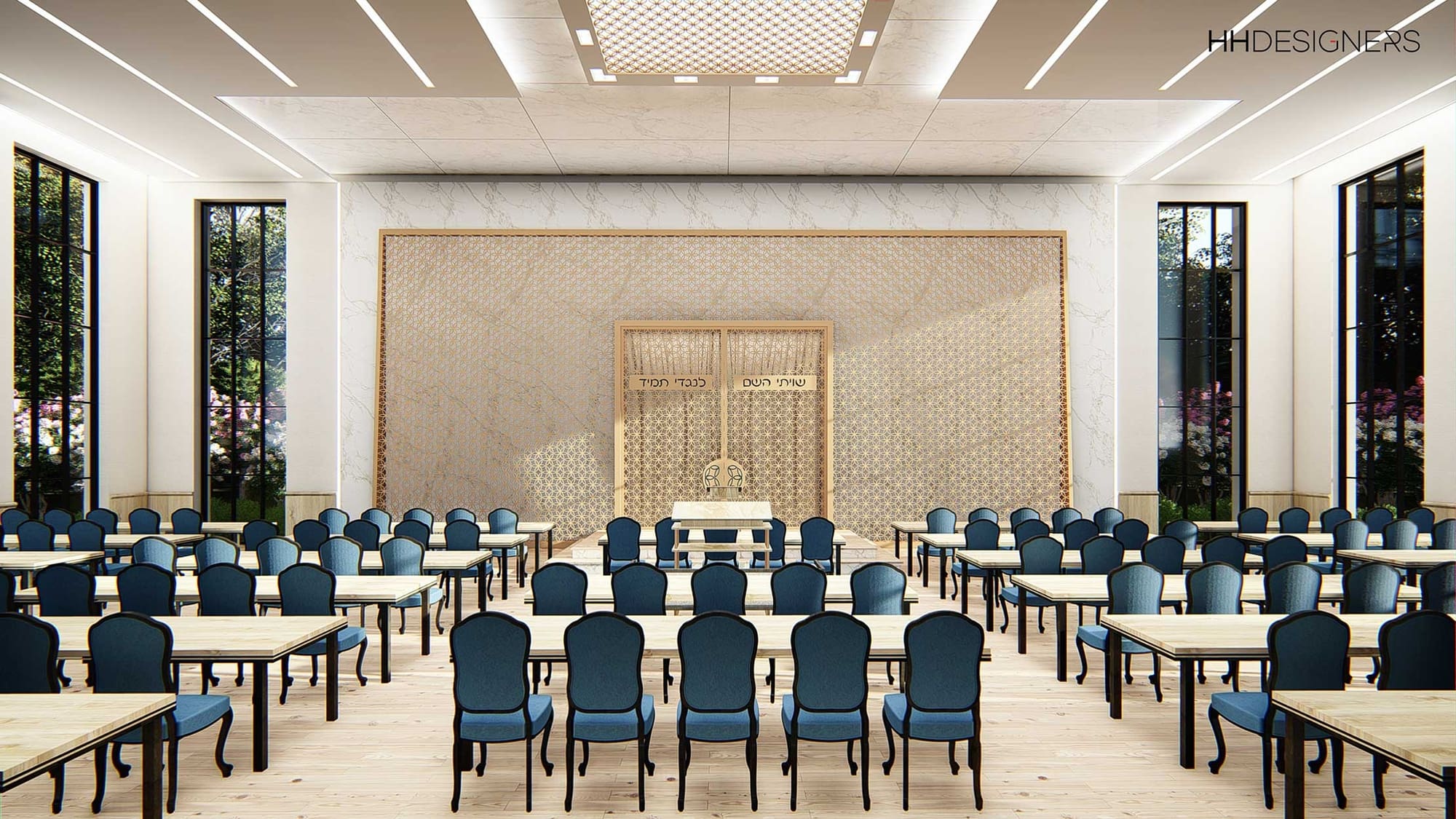
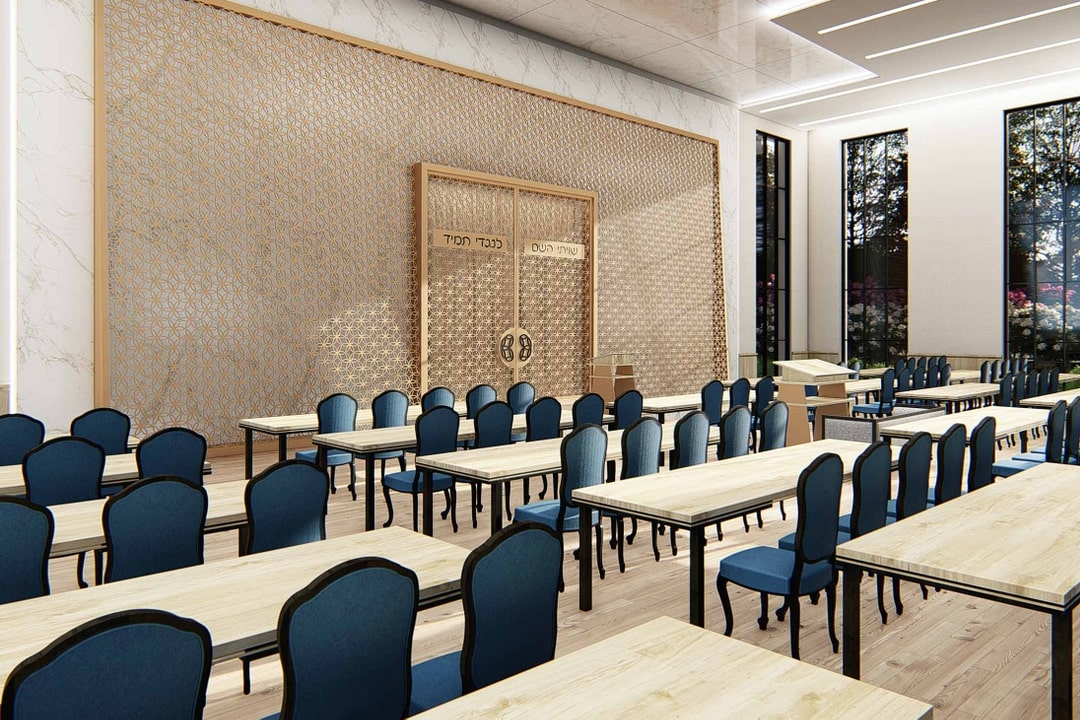
KMC Synagogue stands as a bold interpretation of synagogue design. The structure’s form blends modern architectural lines with the symbolism of continuity and reverence.
The exterior façade uses a combination of glass and stone, representing the interplay between strength and transparency. Large windows invite daylight deep into the sanctuary, transforming the natural environment into a living part of worship.
Inside, the sanctuary is a symphony of geometry and texture. The aron kodesh rests within a tall alcove of sculpted wood that rises toward the ceiling. Vertical slats echo the rhythm of Hebrew script, a subtle reference to the written Torah.
Seating radiates around the bimah, reinforcing the sense of community. Lighting layers create moods for every moment: bright for reading, dim for reflection, and warm for Shabbat.
Adjacent study rooms and classrooms connect seamlessly through wide corridors, ensuring accessibility and flow. The spatial organization supports not just prayer, but education, mentoring, and hospitality, all central to synagogue life.
As noted by the American Institute of Architects (AIA), successful religious design prioritizes circulation and sensory balance, ensuring visitors move naturally from public gathering to private reflection.
Design takeaway: KMC Synagogue embodies the unity of form and faith. Every curve, light, and line serves the spiritual function of gathering and uplifting.

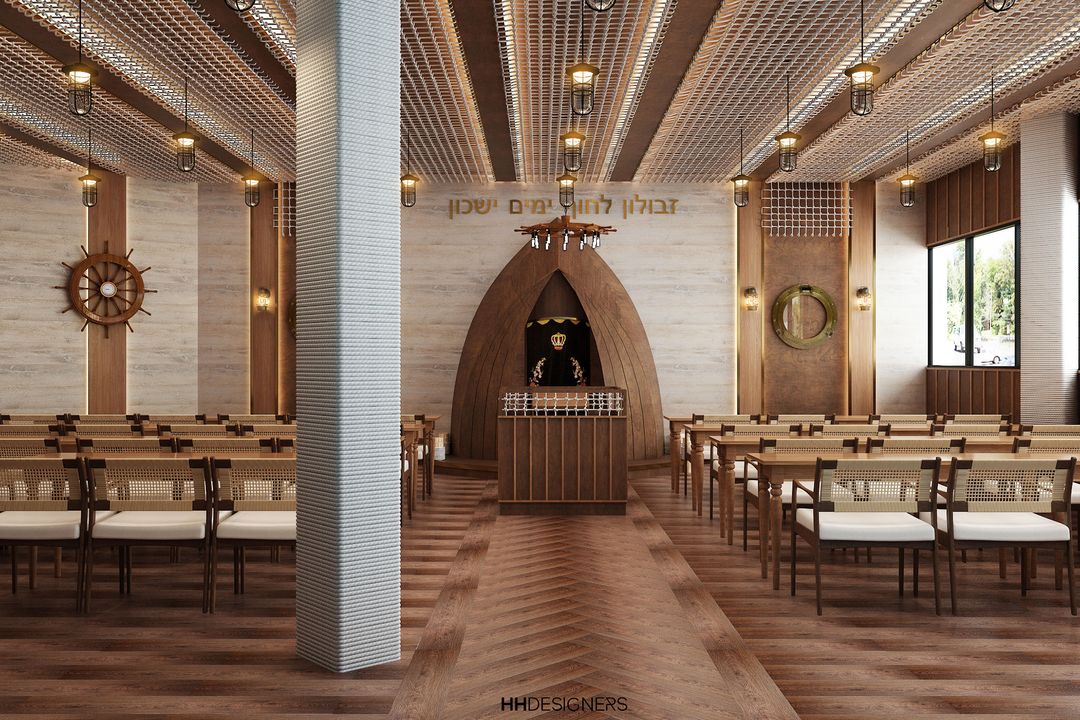
The Boat Shul represents one of HH Designers’ most creative achievements, translating the symbolism of water into architecture. Located near a waterfront community, the shul embodies movement, reflection, and serenity.
From the exterior, curved forms mimic the gentle motion of waves. Natural materials such as wood, glass, and stone establish continuity between land and sea. Inside, expansive glazing allows sunlight to shimmer across polished surfaces, creating a constantly shifting light pattern that feels alive.
The sanctuary’s ceiling slopes upward toward the eastern wall, where the aron kodesh is framed by a sculptural backdrop resembling flowing water. The motif references the biblical association between water and renewal, a concept explored in depth by Jewish scholars featured on Chabad.org.
Acoustic performance was essential to this project. The sanctuary’s curved surfaces and soft finishes ensure sound clarity for prayer and song, while also maintaining intimacy.
The social hall opens directly to an outdoor terrace overlooking the water, where communal meals and celebrations connect the congregation to nature. This integration of indoor and outdoor experience aligns with trends discussed by Dezeen, which highlights the rise of biophilic religious architecture.
Design takeaway: Boat Shul demonstrates how setting can inform design. Through fluid form and natural light, this synagogue becomes both a place of worship and a metaphor for spiritual flow.
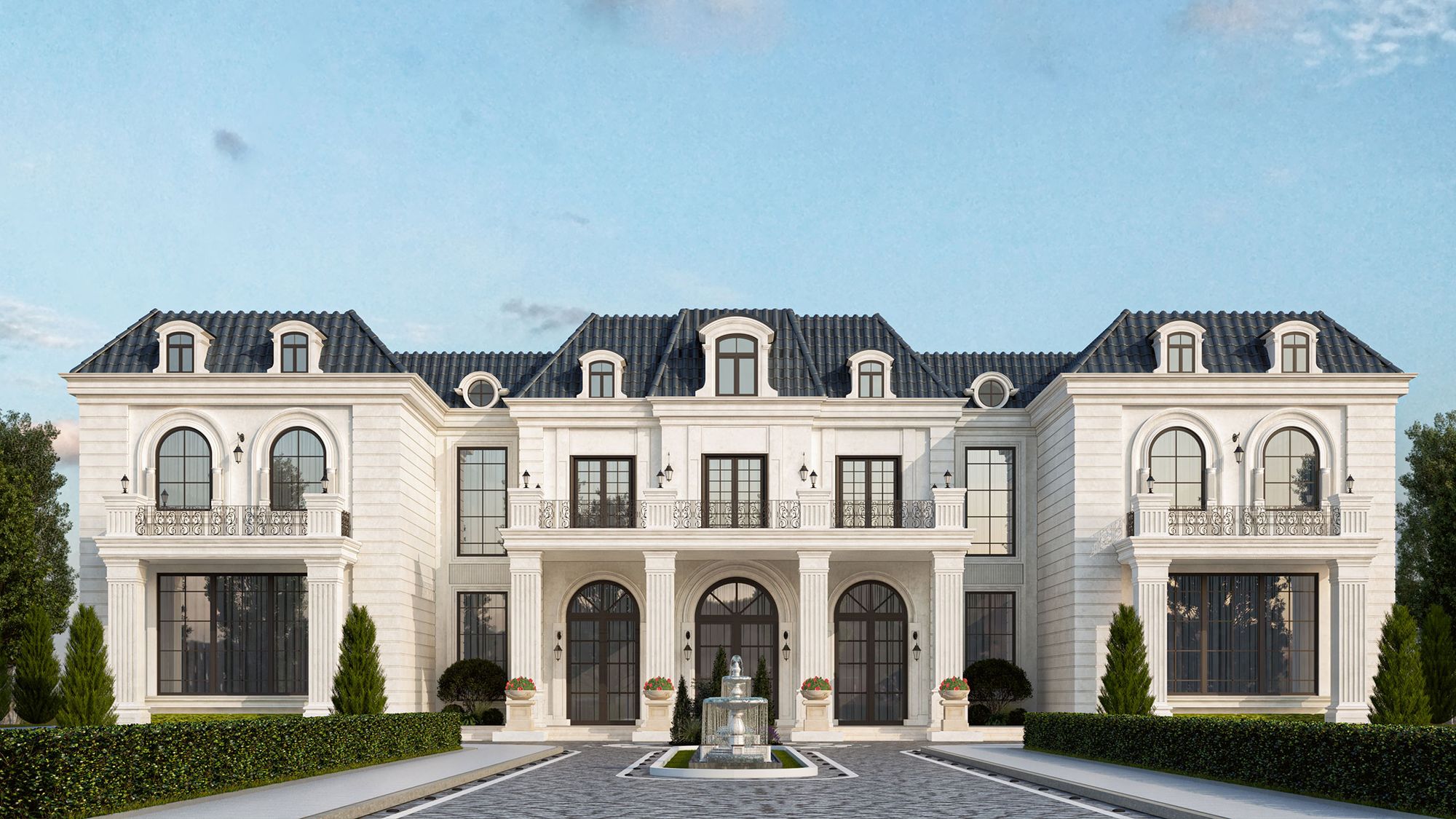
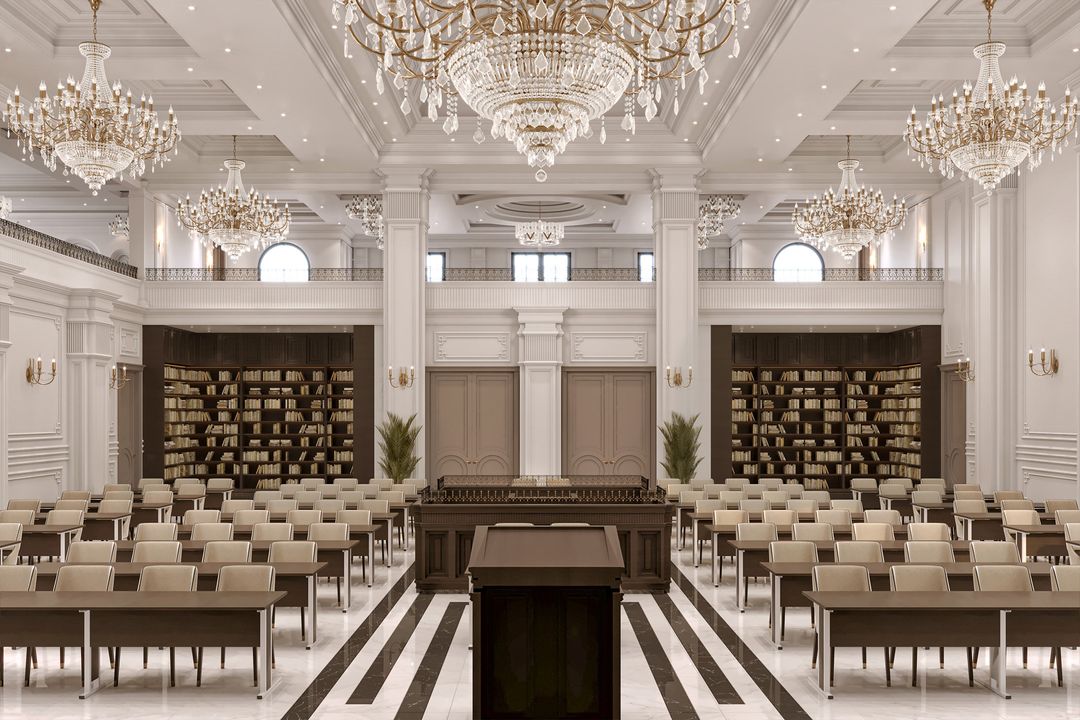
Pitney Shul is a testament to how smaller synagogues can embody grandeur through proportion and material choice. Situated in a historic coastal town, the design blends local character with contemporary refinement.
The sanctuary features warm-toned woods, neutral walls, and natural fabrics that create a tactile, comforting environment. Every detail, from the handcrafted bimah to the pendant lighting, is designed to enhance a sense of closeness.
The aron kodesh, made of walnut and brass, glows under a canopy of soft, recessed lighting. Surrounding seating embraces the central platform, emphasizing inclusivity and shared focus.
Adjacent community rooms are connected visually through transparent glass panels etched with Hebrew verses. These artistic details create cohesion while preserving privacy.
Special attention was given to acoustics, ventilation, and lighting. Subtle airflow vents hidden within millwork ensure comfort without distraction. The lighting transitions throughout the day, mirroring the rhythm of prayer services.
As the Jewish Telegraphic Agency (JTA) often notes, smaller Jewish communities rely heavily on their shuls as social, educational, and cultural anchors. Pitney Shul fulfills that role through thoughtful, flexible design.
Design takeaway: Intimacy can be monumental. Pitney Shul shows that craftsmanship and proportion can transform a small space into a powerful, lasting symbol of faith.


The Jackson Shul project is a careful restoration and modernization of a long-standing synagogue that had served its community for generations. HH Designers approached the project with reverence for its history and an eye toward future functionality.
The existing structure had strong bones but outdated systems and interiors. The renovation preserved its exterior form while introducing a refreshed interior language of light and continuity.
Within the sanctuary, HH Designers retained historical features such as arched windows and ceiling moldings while introducing modern materials and lighting. The aron kodesh was reimagined with stone and wood elements that harmonize old craftsmanship with contemporary simplicity.
Support spaces were fully updated. The social hall now accommodates modern events and lifecycle celebrations with improved acoustics and flexible furniture. Classrooms and offices received natural light upgrades and energy-efficient systems following sustainability principles outlined by ArchDaily.
Throughout the building, accessibility and safety standards were enhanced, including improved entryways and circulation routes.
Design takeaway: Jackson Shul proves that renewal can preserve the soul of a community. By blending restoration with modern comfort, the shul bridges past and present beautifully.
Across these five unique projects, several consistent design philosophies define HH Designers’ approach to synagogue architecture:
Natural light is one of the most powerful tools in sacred architecture. It directs attention, marks the passage of time, and evokes divine presence. HH Designers uses daylight as both a symbolic and functional design element, shaping mood and meaning in every sanctuary.
From stone and wood to brass and linen, every material is selected for authenticity and texture. This aligns with design values often discussed in The Jewish Chronicle, which notes that sacred spaces succeed when they engage all the senses.
Modern synagogues must serve many roles: houses of prayer, schools, gathering spaces, and social venues. HH Designers incorporates movable partitions, modular furniture, and adaptable acoustics so each room can shift between sacred and social functions.
When working on historical shuls like Jackson, the firm treats restoration as sacred stewardship. By retaining architectural integrity while introducing new life, these spaces remain both familiar and renewed.
Accessibility is a hallmark of Chabad and communal design worldwide. HH Designers follows universal design principles recommended by the American Institute of Architects (AIA), ensuring that every visitor can participate with comfort and dignity.
While each project has its own regional and aesthetic identity, all share a connection to global Jewish tradition. HH Designers celebrates that continuity through consistent symbolism, warmth, and purpose-driven design.
Today’s synagogue is both ancient and evolving. As noted by architects featured in Dezeen, sacred design now must accommodate technology, sustainability, and multi-generational engagement without losing spiritual resonance.
HH Designers integrates these modern needs seamlessly. In Axstone, lighting systems shift color temperature throughout the day to reflect natural cycles. In KMC, high-efficiency systems reduce environmental impact. In Pitney and Jackson, materials were sourced locally to minimize carbon footprint and honor regional craftsmanship.
Technology is introduced subtly: audiovisual systems for hybrid programming, discreet HVAC integrations, and smart lighting controls that never detract from sanctity. The goal is timelessness supported by innovation.
Through Axstone Synagogue, KMC Synagogue, Boat Shul, Pitney Shul, and Jackson Shul, HH Designers demonstrates that synagogue architecture is an act of devotion and design mastery.
Each project honors Jewish heritage while embracing the realities of contemporary life. Together, they reveal how architecture can uplift, gather, and inspire, translating faith into space, light, and form.
For communities seeking to create or restore their shul, partnering with an interior design firm for synagogues ensures every detail reflects both the sanctity of tradition and the beauty of modern craftsmanship.
